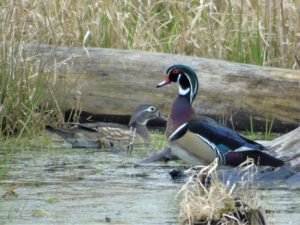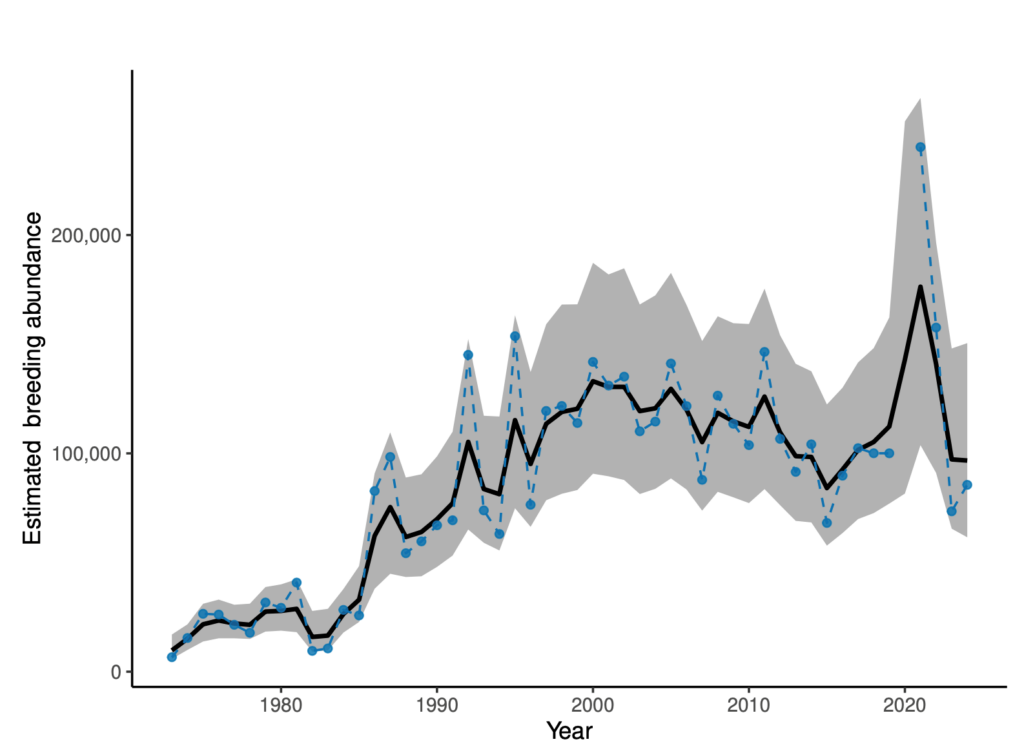By Bruce Ross, Executive Director [email]bross@wisducks.org[/email]
This article originally appeared in Wisconsin Waterfowl Association’s July, 2024 Newsletter edition.

Three days ago, the Wisconsin DNR released its Waterfowl Breeding Population Survey. I think this may be the best early season predictor of our fall hunting season.
According to the DNR, most ducks harvested by Wisconsin hunters are Wisconsin-born. These are generally mallards, blue-winged teal, and wood ducks. The numbers of waterfowl harvested by the large early season group of duck hunters outweighs the harvest of the seasonally smaller number of duck hunters in late October and November. Most late-season harvested ducks are grown north of our borders.
Based on data from flights conducted in April, the recently released DNR report estimates available ponds/wetlands for brood-rearing and provides breeding populations of Wisconsin’s most harvested waterfowl species (mallard, blue-winged teal, wood duck, “other”, and Canada Geese).
My summary is based on that report…. But I’m quick to say that (1) late spring’s rains may have improved nesting conditions; and (2) fall conditions are the trump card for the waterfowl season. For example, last year’s spring report was pretty good (better than this year’s), but dry fall conditions made hunting more challenging – at least for me.
That said, at this early point, I’d say the message remains mixed. Here’s why:
- Wetlands (“basins” in report parlance) are down less than 10-24% from last year, but up 23-84% over the long-term average. (The consistent rain we’ve gotten over the past two months may have helped improve breeding conditions from this numbers.)
- Breeding pairs: “Overall, the duck population estimate for 2024 was similar to what we have experienced over the last few years (2020-2023) and above the average total duck numbers experienced across the prior ten years.
- Mallards were 7.9% below last year, and 17.6% lower than the long term average (LTA), continuing a concerning downward trend.
- Blue-Winged Teal were up over last year (2.4%), but still slightly lower than the LTA (1.3%)
- Wood ducks are marginally lower than 2023 (.5%), and 13% higher than the LTA
- Other Ducks (likely Wisconsin breeders like ringers, redheads, shovellers, green wings, ruddy, mergansers) was the same as last year, but 126% greater than the long-term mean.
- Canada Goose breeding populations are down 3.5% from last year, but more than double the long-term mean (126%)

In total, there are about half a million ducks breeding this year in Wisconsin, representing about a 4% decline from last year, yet 13% above the LTA.

All you duck nerds out there can check out the report for yourself: https://widnr.widen.net/s/ksrvtqqkbc/waterfowl_breeding_population_2024
